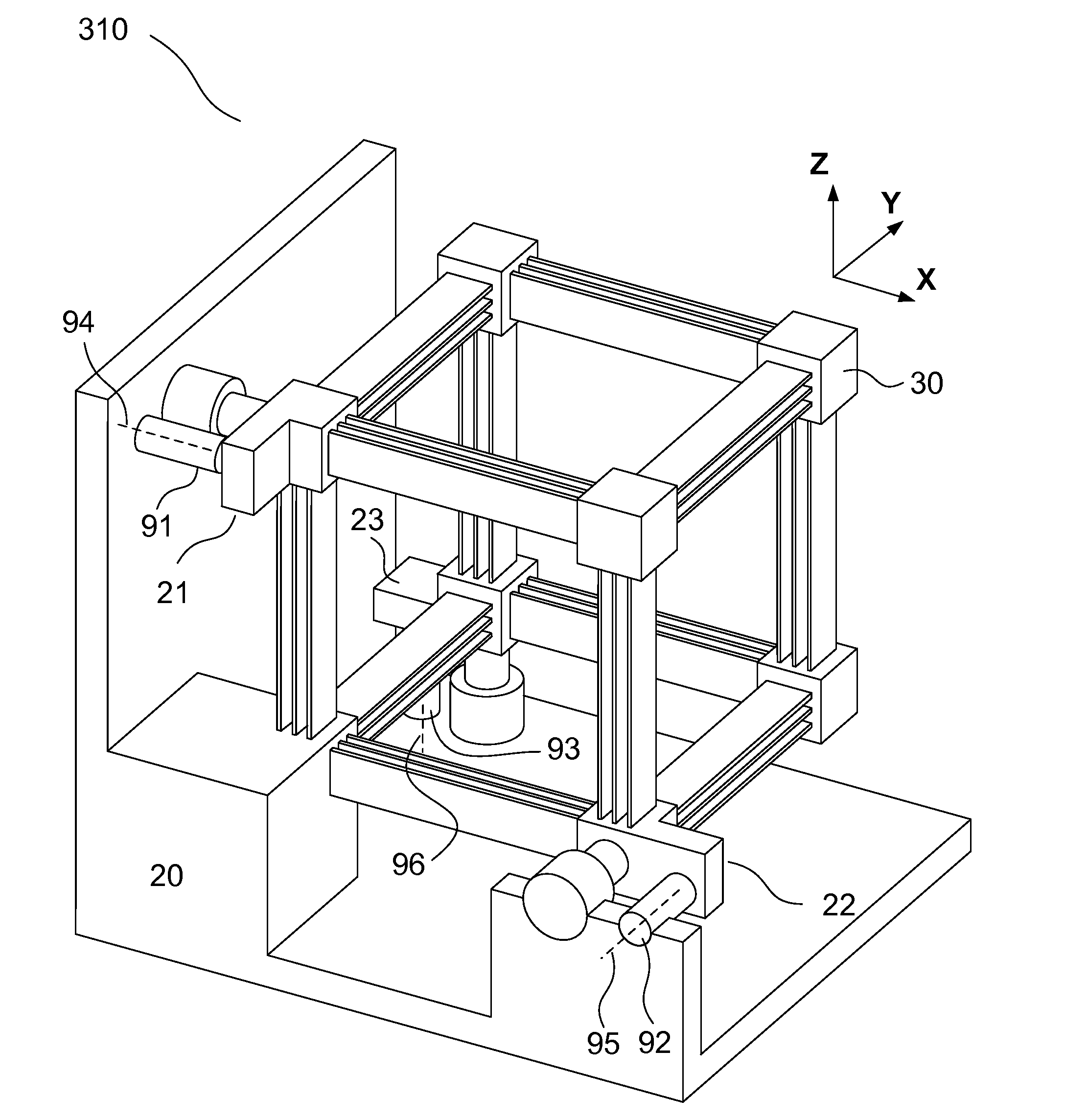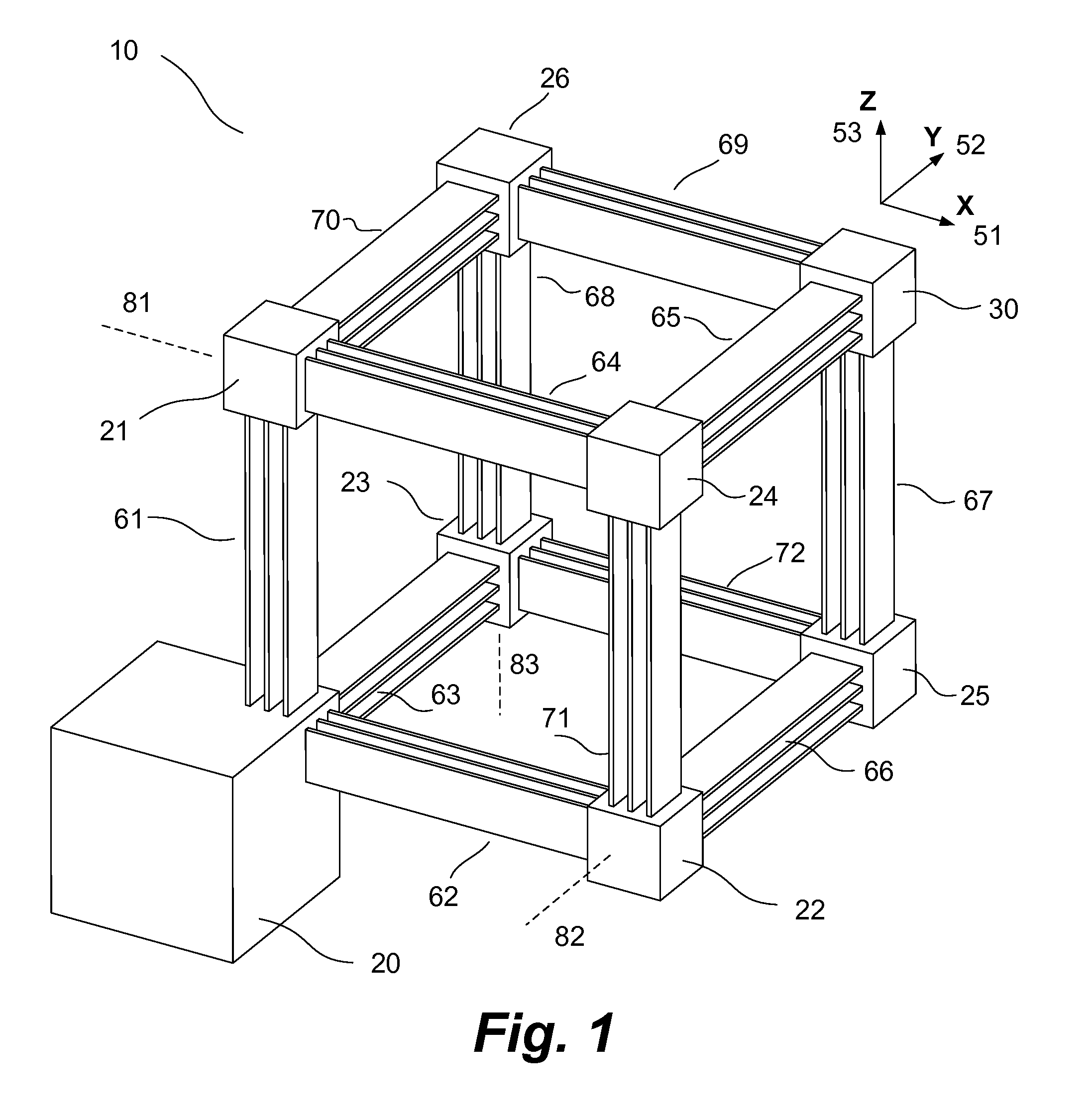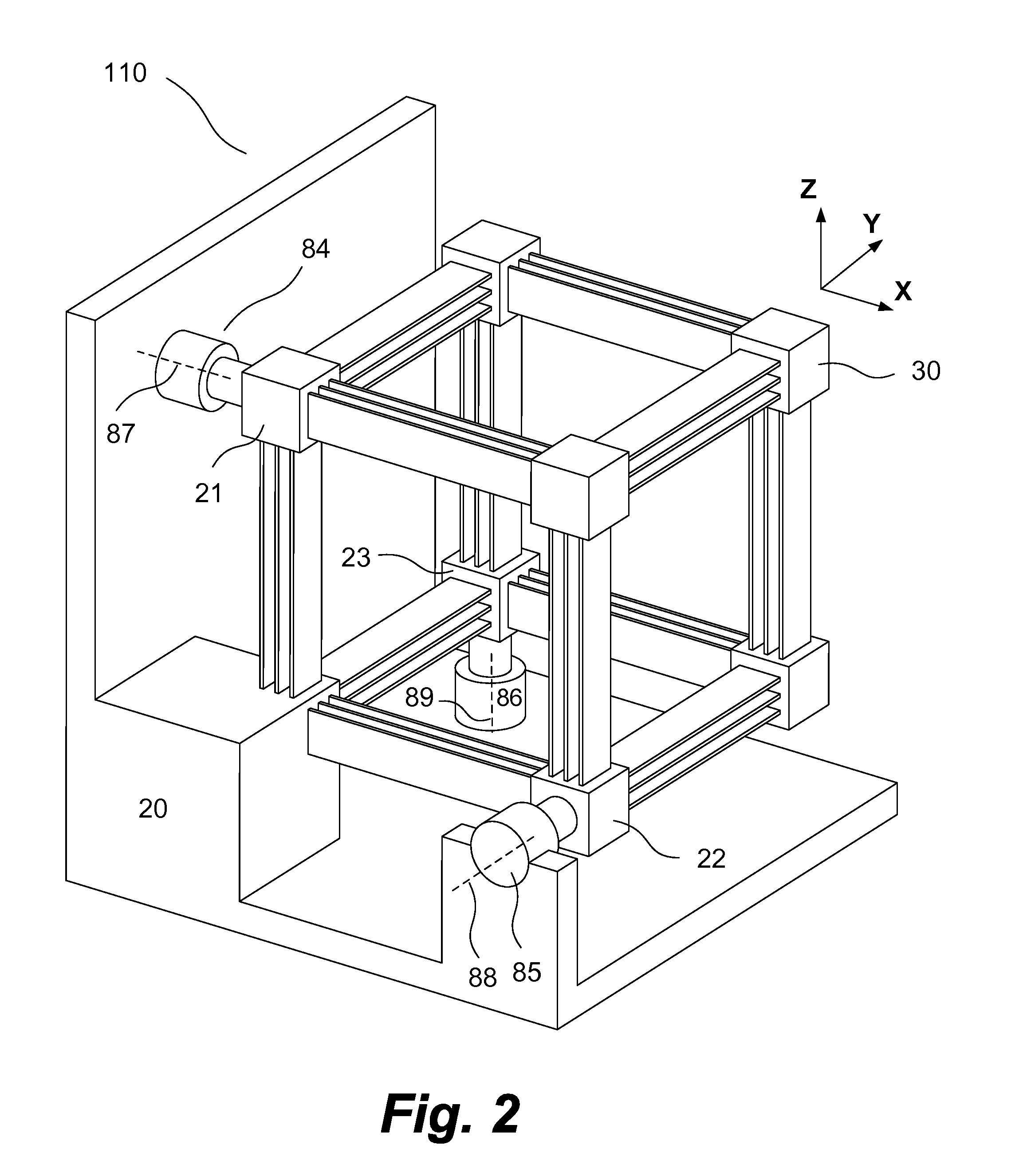Multiple degrees of freedom motion system
a motion system and degree of freedom technology, applied in the direction of mechanical control devices, ignition automatic control, instruments, etc., can solve the problems of inability to provide nanometric motion quality, high cost, maintenance, and high complexity of motion systems, and achieve the effect of facilitating assembly with sensors and minimizing undesired sensing errors
- Summary
- Abstract
- Description
- Claims
- Application Information
AI Technical Summary
Benefits of technology
Problems solved by technology
Method used
Image
Examples
Embodiment Construction
[0040]Referring now to FIG. 1, a motion system 10 is shown. The motion system 10 includes a Ground 20, which is the reference stage of the motion system, and a Motion Stage 30. The Motion Stage has three translational Degrees of Freedom with respect to Ground—X, Y and Z, indicated by 51, 52 and 53, respectively. Ground 20 is connected to a first intermediate stage 21 via a single DoF flexure constraint module 61, which only allows relative X translation between the two rigid stages. Ground 20 is also connected to a second intermediate stage 22 via a single DoF flexure constraint module 62, which only allows relative Y translation between the two. Ground 20 is further connected to a third intermediate stage 23 via a single DoF flexure constraint module 63, which only allows a relative Z translation between the two.
[0041]The first intermediate stage 21 is connected to a fourth intermediate stage 24 via a single DoF flexure constraint module 64, which only allows relative Y translation...
PUM
 Login to View More
Login to View More Abstract
Description
Claims
Application Information
 Login to View More
Login to View More - R&D
- Intellectual Property
- Life Sciences
- Materials
- Tech Scout
- Unparalleled Data Quality
- Higher Quality Content
- 60% Fewer Hallucinations
Browse by: Latest US Patents, China's latest patents, Technical Efficacy Thesaurus, Application Domain, Technology Topic, Popular Technical Reports.
© 2025 PatSnap. All rights reserved.Legal|Privacy policy|Modern Slavery Act Transparency Statement|Sitemap|About US| Contact US: help@patsnap.com



